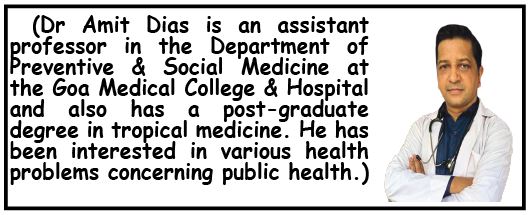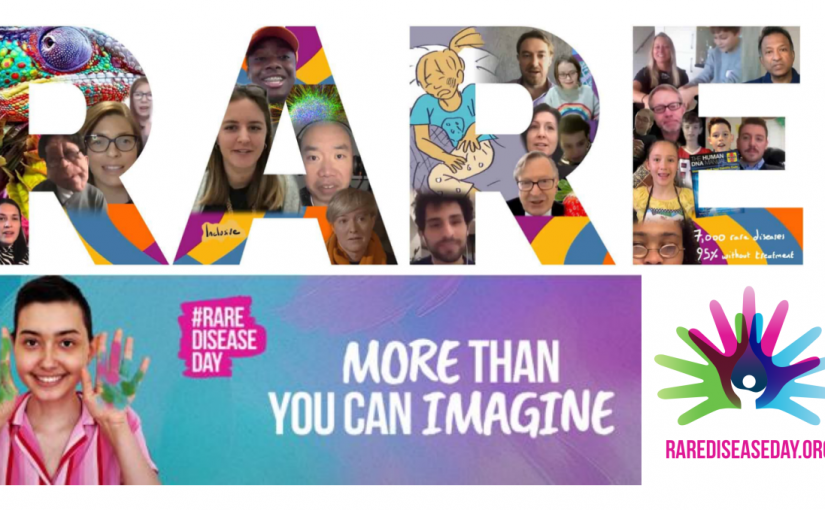An exclusive Q&A interview with Dr Amit Dias
Rare Disease Day is observed on February 28 to draw attention to the millions of people worldwide living with rare conditions. We spoke with Dr Amit Dias to gain deeper insights into the challenges these patients face, he says, “Though rare, more people than you can imagine are living with these diseases. We must not ignore them.” Read on….
Goan Observer: It’s a pleasure to have you with us to discuss a rare topic on rare diseases. Would you explain the significance of the World Rare Disease Day campaign?
Dr Amit Dias: Thank you for having me. World Rare Disease Day is observed annually on February 28. It’s a global initiative aimed at raising awareness about rare diseases and advocating for better healthcare, social support and research. I remember it was first launched in 2008 and is now observed in over 100 countries. The campaign brings together patients, caregivers, researchers, policymakers and the healthcare community to ensure that rare diseases remain a global priority.
One of the key initiatives of this campaign is “Light Up for Rare.” Here, iconic landmarks, buildings and homes are illuminated in the Rare Disease Day colors to show solidarity with the rare disease community. The theme this year is “More than you can imagine.”
Q: To ensure we are on the same page, what exactly is a rare disease?
A: A disease is classified as rare when it affects fewer than one in 2,000 people. While each rare disease affects only a small fraction of the population, collectively, rare diseases impact over 300 million people worldwide, with more than 6,000 different rare diseases identified.
Q: What are some key characteristics of rare diseases?
A: Rare diseases are highly diverse and present unique challenges:
Wide variation in symptoms: Symptoms can differ not only between diseases but also among individuals with the same condition, making diagnosis difficult.
Genetic origin: Around 72% of rare diseases are genetic in nature, and nearly 1 in 5 cancers are classified as rare.
Delayed diagnosis: Due to the lack of awareness and overlapping symptoms with other diseases, many patients experience delays in receiving a proper diagnosis and treatment.
Progressive and life-altering: Many rare diseases are chronic, degenerative and impact the patient’s daily life significantly.
Limited treatment options: Many rare diseases have no cure and treatment is often unavailable or expensive, necessitating continued research and policy support.

Q: How can Rare Disease Day make a real difference?
A: I don’t think we would be having this conversation if it wasn’t for this campaign. The campaign serves multiple purposes:
Raising Awareness: Educating the general public, healthcare professionals and policymakers about rare diseases.
Advocacy for Better Healthcare: Ensuring equitable access to diagnosis, treatment, and specialized care.
Encouraging Research: Highlighting the need for more research to develop better diagnostic tools and treatments.
Supporting Patients and Families: Providing a platform for patients and caregivers to share their experiences and connect with support groups.
Global Policy Impact: Advocating for Universal Health Coverage (UHC) and integrating rare diseases into national health programs as part of the United Nations’ Sustainable Development Goals (SDGs).
Q: Can you name some of these rare diseases in India?
A: According to the Organization for Rare Diseases India (ORDI), which defines a rare illness a bit differently, it’s rare if it affects one in every 5,000 Indians or less. Based on this, they listed around 263 rare diseases in India. It may not help listing all of them for you but to give you an example these are:
Achalasia Cardia — A rare disorder that makes it difficult for food and liquid to pass from the swallowing tube connecting your mouth and stomach (oesophagus).
Acromesomelic Dysplasia – An inherited, skeletal disorder of short stature known as short-limb dwarfism.Adrenoleukodystrophy (ALD) – A genetic condition damaging the myelin sheath (membrane) that covers nerve cells in the spinal cord and brain.
Acute inflammatory demyelinating polyneuropathy – An autoimmune disease of the peripheral nervous system, recognized over a century ago.
Acute Inflammatory Demyelinating Polyneuropathy (AIDP) – A general classification of pathologies affecting the nervous system.
Acute Lymphoblastic Leukaemia – Blood cancer, especially the white blood cells.
Addison’s Disease (adrenal insufficiency) – The adrenal glands in the body don’t make enough of certain cortisol and aldosterone hormones.
Acanthocytosis Chorea – A neurological disorder that affects movement in many parts of the body).
Alagille syndrome – An inherited condition of bile that builds up in the liver.
Alkaptonuria (black urine disease) – an inherited condition of impaired protein breakdown resulting in the build-up of homogentisic acid.
Q: Can you shed light on its relevance to Goa?
A: Goans are just like other people in the world and we do have our share of rare health conditions. We have been working with rare diseases. Very often a disease is considered rare when it isn’t — we are simply not making the diagnosis. When I was doing my research on Alzheimer’s disease, everyone rejected the thought of it being a public health problem and felt it was a rare disease. However as I searched for it in the community, I realized it was very common and almost 90% of them did not get a diagnosis.
There are many such conditions that may be common, but are not diagnosed and thought to be rare. Cases like this remind us that we should not ignore a condition, thinking it is rare. It could be more than we can imagine.
Take for example, Melioidosis:
(Burkholderia pseudomallei) This is a bacterial infection, commonly found in soil and water in tropical climates, can cause severe pneumonia and sepsis. In Goa, farmers, construction workers, and individuals exposed to contaminated water are at higher risk, particularly during the monsoon season. Without proper diagnosis, cases may be wrongly classified as some other bacterial infections.
Scrub Typhus: This bacterial infection is transmitted by mite larvae and can lead to high fever, multi-organ failure, and complications if untreated. The humid and forested regions of Goa provide a suitable habitat for the mite vectors, making it important to increase diagnostic capacity and public awareness.
There is a need for improved surveillance, early detection, and better diagnostic infrastructure in regions where these infections may be more common than perceived.
Q: What are the major challenges in addressing rare diseases in India?
A: We are a huge country and every state has its unique set of health problems and socio-demographic characteristics. We are home to many of the neglected tropical diseases. Some of the challenges we face are:
Delayed Diagnosis: Due to low awareness and a lack of specialized diagnostic tools, patients often experience years of misdiagnoses before receiving an accurate diagnosis.
Limited Treatment Access: Many treatments, including orphan drugs, are expensive and not readily available.
Lack of Research and Data: There is a gap in epidemiological data, making it difficult to understand the true burden of rare diseases in India.
Social Stigma: Families often face isolation due to myths and misconceptions about rare conditions.
Policy Implementation Challenges: While India has introduced a National Policy for Rare Diseases, funding and execution remain inconsistent.
We are fortunate to have a good network of health services and outreach initiatives in the state of Goa to ensure that no one is left lacking of health care facilities.
Q: How can India improve its approach to rare diseases?
A: In general steps could include the following:
Expanding Diagnostic Capabilities: Strengthening laboratory infrastructure and training healthcare providers.
Affordable Treatment Access: Government initiatives to subsidize orphan drugs and include rare diseases under insurance schemes.
Encouraging Research: Collaboration between academic institutions, pharmaceutical companies and policymakers to drive innovation.
Public Awareness Campaigns: National efforts to educate communities and reduce stigma.
Better Policy Enforcement: Ensuring that existing rare disease policies translatae into actionable support for patients and their families.
Q: How can individuals participate in the Rare Disease Day campaign?
A: There are many ways to get involved and make a difference.
The #LightUpForRare Movement was held on Rare Disease Day and important landmarks were lit up in the campaign colors on February 28 to raise awareness.
Learn and Educate Others: Encourage schools, workplaces and local communities to engage in conversations about rare diseases.
Support Research and Patient Groups
Together, we can make the invisible visible.
Q: Finally, what is your message to our readers on this Rare Disease Day?
A: My message is simple: Rare diseases may be uncommon, but their impact is not. Every person affected by a rare disease deserves early diagnosis, effective treatment and a supportive community.
By raising awareness, advocating for better policies and standing in solidarity with those affected, we can drive real change. Let’s all do our part to shine a light on rare diseases and ensure that no one is left behind.

